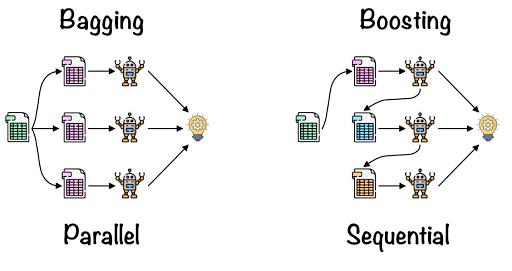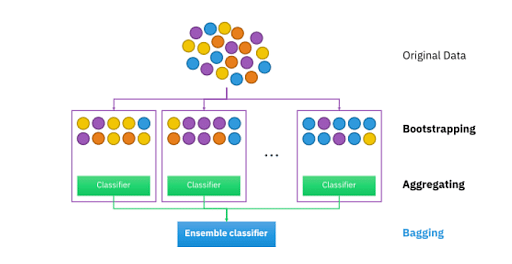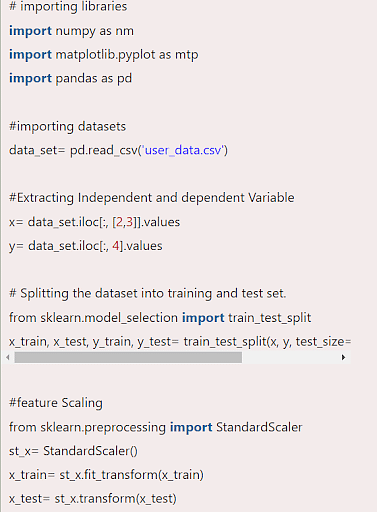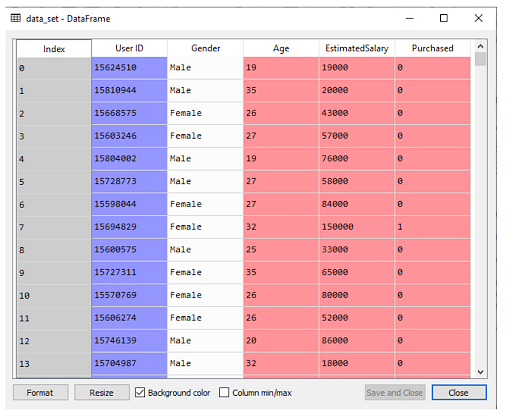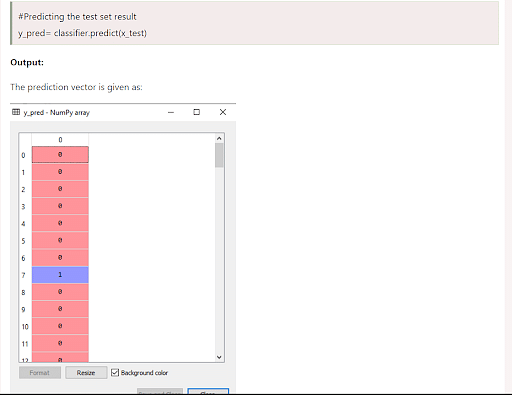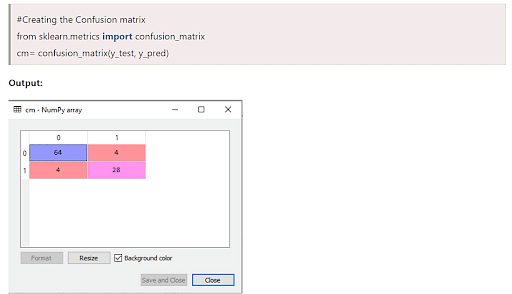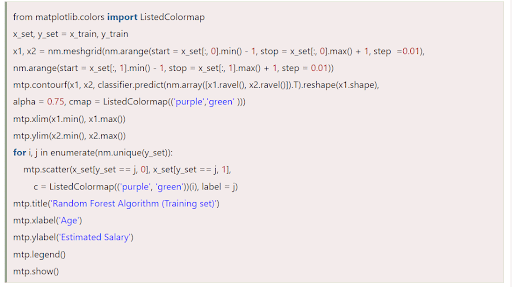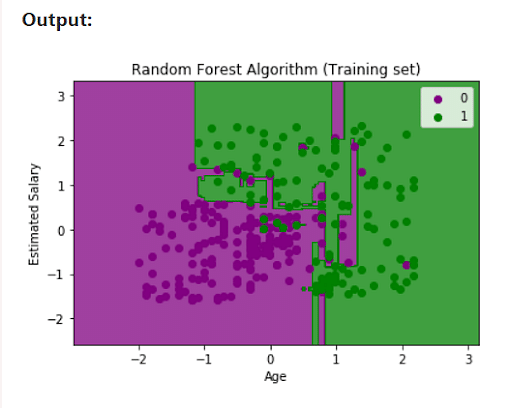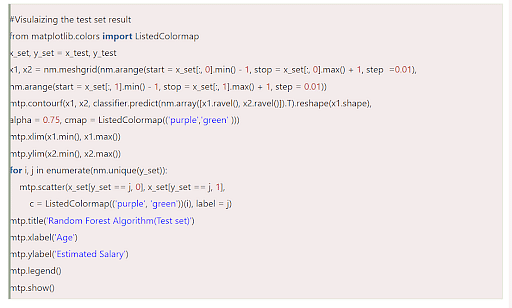- Random Forest Algorithm
- Your AI/ML Career is Just Around The Corner!
- Types of Machine Learning
- Reinforced Learning
- Unsupervised Learning
- Supervised Learning
- Your AI/ML Career is Just Around The Corner!
- Working of Random Forest Algorithm
- Your AI/ML Career is Just Around The Corner!
- Essential Features of Random Forest
- Why Use a Random Forest Algorithm?
- Your AI/ML Career is Just Around The Corner!
- Important Hyperparameters
- Important Terms to Know
- Entropy
- Information Gain
- Leaf Node
- Decision Node
- Root Node
- Your AI/ML Career is Just Around The Corner!
- Case Example
- Coding in Python – Random Forest
- Master the Right AI Tools for the Right Job!
- Applications of Random Forest
- When to Avoid Using Random Forests?
- Advantages of Random Forest Algorithm
- Master the Right AI Tools for the Right Job!
- Disadvantages of Random Forest Algorithm
- Learn More with Simplilearn
- Find our Post Graduate Program in AI and Machine Learning Online Bootcamp in top cities:
- About the Author
Random Forest Algorithm
A Random Forest Algorithm is a supervised machine learning algorithm that is extremely popular and is used for Classification and Regression problems in Machine Learning. We know that a forest comprises numerous trees, and the more trees more it will be robust. Similarly, the greater the number of trees in a Random Forest Algorithm, the higher its accuracy and problem-solving ability. Random Forest is a classifier that contains several decision trees on various subsets of the given dataset and takes the average to improve the predictive accuracy of that dataset. It is based on the concept of ensemble learning which is a process of combining multiple classifiers to solve a complex problem and improve the performance of the model.
Your AI/ML Career is Just Around The Corner!
Types of Machine Learning
To better understand Random Forest algorithm and how it works, it’s helpful to review the three main types of machine learning —
Reinforced Learning
Unsupervised Learning
Supervised Learning
With supervised training, the training data contains the input and target values. The algorithm picks up a pattern that maps the input values to the output and uses this pattern to predict values in the future. Unsupervised learning, on the other hand, uses training data that does not contain the output values. The algorithm figures out the desired output over multiple iterations of training. Finally, we have reinforcement learning. Here, the algorithm is rewarded for every right decision made, and using this as feedback, and the algorithm can build stronger strategies.
Your AI/ML Career is Just Around The Corner!
Working of Random Forest Algorithm
The following steps explain the working Random Forest Algorithm:
Step 1: Select random samples from a given data or training set.
Step 2: This algorithm will construct a decision tree for every training data.
Step 3: Voting will take place by averaging the decision tree.
Step 4: Finally, select the most voted prediction result as the final prediction result.
This combination of multiple models is called Ensemble. Ensemble uses two methods:
- Bagging: Creating a different training subset from sample training data with replacement is called Bagging. The final output is based on majority voting.
- Boosting: Combing weak learners into strong learners by creating sequential models such that the final model has the highest accuracy is called Boosting. Example: ADA BOOST, XG BOOST.
Bagging: From the principle mentioned above, we can understand Random forest uses the Bagging code. Now, let us understand this concept in detail. Bagging is also known as Bootstrap Aggregation used by random forest. The process begins with any original random data. After arranging, it is organised into samples known as Bootstrap Sample. This process is known as Bootstrapping.Further, the models are trained individually, yielding different results known as Aggregation. In the last step, all the results are combined, and the generated output is based on majority voting. This step is known as Bagging and is done using an Ensemble Classifier.
Your AI/ML Career is Just Around The Corner!
Essential Features of Random Forest
- Miscellany: Each tree has a unique attribute, variety and features concerning other trees. Not all trees are the same.
- Immune to the curse of dimensionality: Since a tree is a conceptual idea, it requires no features to be considered. Hence, the feature space is reduced.
- Parallelization: We can fully use the CPU to build random forests since each tree is created autonomously from different data and features.
- Train-Test split: In a Random Forest, we don’t have to differentiate the data for train and test because the decision tree never sees 30% of the data.
- Stability: The final result is based on Bagging, meaning the result is based on majority voting or average.
Difference between Decision Tree and Random Forest
- They usually suffer from the problem of overfitting if it’s allowed to grow without any control.
- Since they are created from subsets of data and the final output is based on average or majority ranking, the problem of overfitting doesn’t happen here.
- A single decision tree is comparatively faster in computation.
- It is slower.
- They use a particular set of rules when a data set with features are taken as input.
- Random Forest randomly selects observations, builds a decision tree and then the result is obtained based on majority voting. No formulas are required here.
Why Use a Random Forest Algorithm?
There are a lot of benefits to using Random Forest Algorithm, but one of the main advantages is that it reduces the risk of overfitting and the required training time. Additionally, it offers a high level of accuracy. Random Forest algorithm runs efficiently in large databases and produces highly accurate predictions by estimating missing data.
Your AI/ML Career is Just Around The Corner!
Important Hyperparameters
Hyperparameters are used in random forests to either enhance the performance and predictive power of models or to make the model faster.
The following hyperparameters are used to enhance the predictive power:
- n_estimators: Number of trees built by the algorithm before averaging the products.
- max_features: Maximum number of features random forest uses before considering splitting a node.
- mini_sample_leaf: Determines the minimum number of leaves required to split an internal node.
The following hyperparameters are used to increase the speed of the model:
- n_jobs: Conveys to the engine how many processors are allowed to use. If the value is 1, it can use only one processor, but if the value is -1,, there is no limit.
- random_state: Controls randomness of the sample. The model will always produce the same results if it has a definite value of random state and if it has been given the same hyperparameters and the same training data.
- oob_score: OOB (Out Of the Bag) is a random forest cross-validation method. In this, one-third of the sample is not used to train the data but to evaluate its performance.
Important Terms to Know
There are different ways that the Random Forest algorithm makes data decisions, and consequently, there are some important related terms to know. Some of these terms include:
Entropy
Information Gain
Leaf Node
Decision Node
Root Node
Now that you have looked at the various important terms to better understand the random forest algorithm, let us next look at a case example.
Your AI/ML Career is Just Around The Corner!
Case Example
Let’s say we want to classify the different types of fruits in a bowl based on various features, but the bowl is cluttered with a lot of options. You would create a training dataset that contains information about the fruit, including colors, diameters, and specific labels (i.e., apple, grapes, etc.) You would then need to split the data by sorting out the smallest piece so that you can split it in the biggest way possible. You might want to start by splitting your fruits by diameter and then by color. You would want to keep splitting until that particular node no longer needs it, and you can predict a specific fruit with 100 percent accuracy.
Below is a case example using Python
Coding in Python – Random Forest
1. Data Pre-Processing Step: The following is the code for the pre-processing step-
We have processed the data when we have loaded the dataset:
2. Fitting the Random Forest Algorithm: Now, we will fit the Random Forest Algorithm in the training set. To do that, we will import RandomForestClassifier class from the sklearn. Ensemble library.
Here, the classifier object takes the following parameters:
- n_estimators: The required number of trees in the Random Forest. The default value is 10.
- criterion: It is a function to analyse the accuracy of the split.
3. Predicting the Test Set result:
4. Creating the Confusion Matrix
5. Visualizing the training Set result
6. Visualizing the Test Set Result
Master the Right AI Tools for the Right Job!
Applications of Random Forest
Some of the applications of Random Forest Algorithm are listed below:
- Banking: It predicts a loan applicant’s solvency. This helps lending institutions make a good decision on whether to give the customer loan or not. They are also being used to detect fraudsters.
- Health Care: Health professionals use random forest systems to diagnose patients. Patients are diagnosed by assessing their previous medical history. Past medical records are reviewed to establish the proper dosage for the patients.
- Stock Market: Financial analysts use it to identify potential markets for stocks. It also enables them to remember the behaviour of stocks.
- E-Commerce: Through this system, e-commerce vendors can predict the preference of customers based on past consumption behaviour.
When to Avoid Using Random Forests?
Random Forests Algorithms are not ideal in the following situations:
- Extrapolation: Random Forest regression is not ideal in the extrapolation of data. Unlike linear regression, which uses existing observations to estimate values beyond the observation range.
- Sparse Data: Random Forest does not produce good results when the data is sparse. In this case, the subject of features and bootstrapped sample will have an invariant space. This will lead to unproductive spills, which will affect the outcome.
Advantages of Random Forest Algorithm
- Can perform both Regression and classification tasks.
- Produces good predictions that can be understood easily.
- Can handle large data sets efficiently.
- Provides a higher level of accuracy in predicting outcomes over the decision algorithm.
Master the Right AI Tools for the Right Job!
Disadvantages of Random Forest Algorithm
- While using a Random Forest Algorithm, more resources are required for computation.
- It Consumes more time compared to the decision tree algorithm.
- Less intuitive when we have an extensive collection of decision trees.
- Extremely complex and requires more computational resources.
Learn More with Simplilearn
Being an adaptive User Interface and flexible, Random Forest Algorithm finds its use in various societal and industrial sectors. It uses ensemble learning which enables organizations to solve regression and classification problems. It is a handy tool for a software developer since it makes accurate predictions in strategic decisions. It also solves the issue of the overfitting of datasets.
Whether you’re new to the Random Forest algorithm or you’ve got the fundamentals down, enrolling in one of our programs can help you master the learning method. Our Caltech Post Graduate Program in AI and Machine Learning teaches students a variety of skills, including Random Forest. Learn more and sign up today!
Find our Post Graduate Program in AI and Machine Learning Online Bootcamp in top cities:
| Name | Date | Place | |
|---|---|---|---|
| Post Graduate Program in AI and Machine Learning | Cohort starts on 25th Sep 2023, Weekend batch | Your City | View Details |
| Post Graduate Program in AI and Machine Learning | Cohort starts on 28th Sep 2023, Weekend batch | Your City | View Details |
| Post Graduate Program in AI and Machine Learning | Cohort starts on 10th Oct 2023, Weekend batch | Your City | View Details |
About the Author
Simplilearn
Simplilearn is one of the world’s leading providers of online training for Digital Marketing, Cloud Computing, Project Management, Data Science, IT, Software Development, and many other emerging technologies.
Источник


